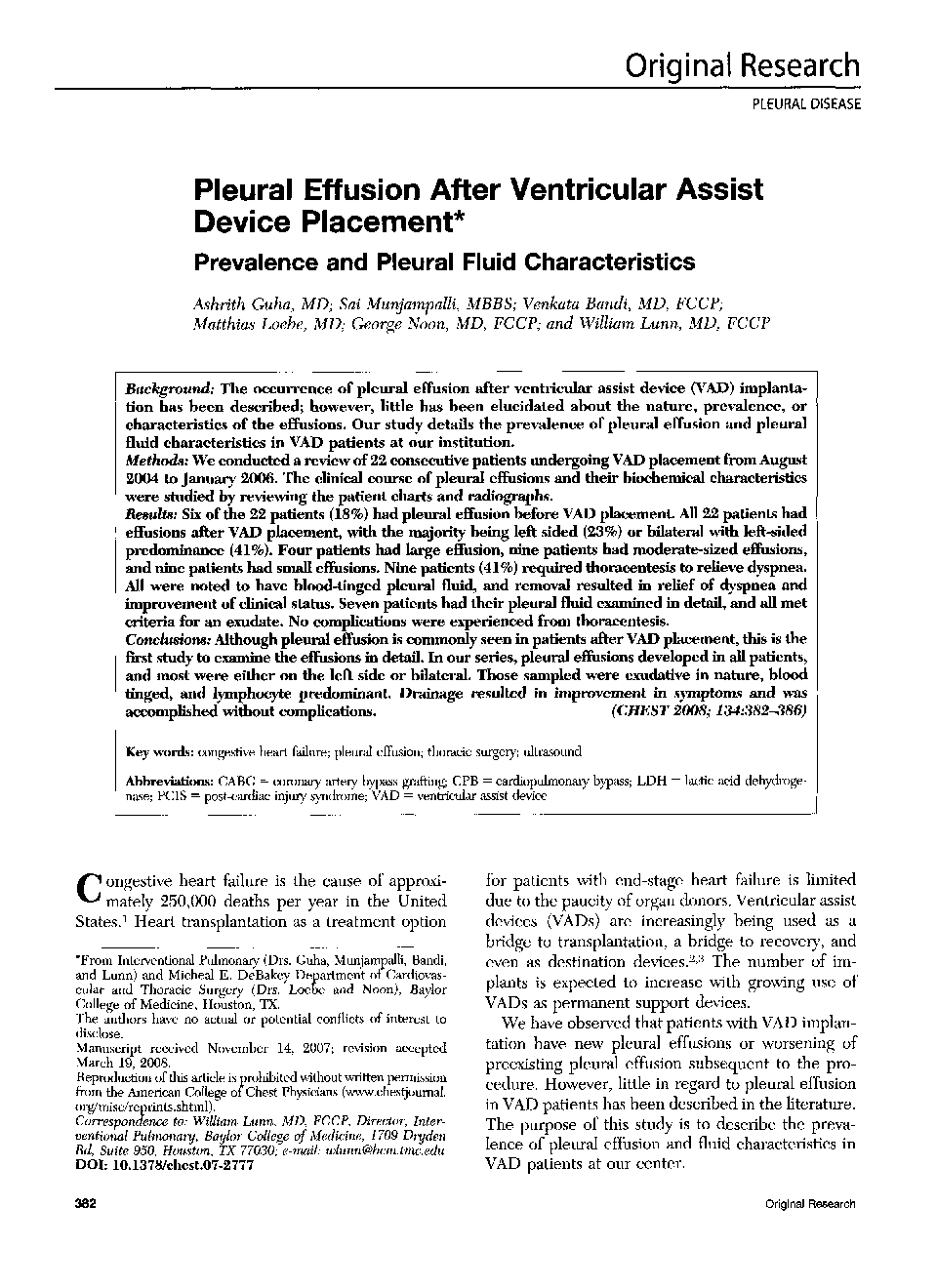| Article ID | Journal | Published Year | Pages | File Type |
|---|---|---|---|---|
| 2905842 | Chest | 2008 | 5 Pages |
BackgroundThe occurrence of pleural effusion after ventricular assist device (VAD) implantation has been described; however, little has been elucidated about the nature, prevalence, or characteristics of the effusions. Our study details the prevalence of pleural effusion and pleural fluid characteristics in VAD patients at our institution.MethodsWe conducted a review of 22 consecutive patients undergoing VAD placement from August 2004 to January 2006. The clinical course of pleural effusions and their biochemical characteristics were studied by reviewing the patient charts and radiographs.ResultsSix of the 22 patients (18%) had pleural effusion before VAD placement. All 22 patients had effusions after VAD placement, with the majority being left sided (23%) or bilateral with left-sided predominance (41%). Four patients had large effusion, nine patients had moderate-sized effusions, and nine patients had small effusions. Nine patients (41%) required thoracentesis to relieve dyspnea. All were noted to have blood-tinged pleural fluid, and removal resulted in relief of dyspnea and improvement of clinical status. Seven patients had their pleural fluid examined in detail, and all met criteria for an exudate. No complications were experienced from thoracentesis.ConclusionsAlthough pleural effusion is commonly seen in patients after VAD placement, this is the first study to examine the effusions in detail. In our series, pleural effusions developed in all patients, and most were either on the left side or bilateral. Those sampled were exudative in nature, blood tinged, and lymphocyte predominant. Drainage resulted in improvement in symptoms and was accomplished without complications.
